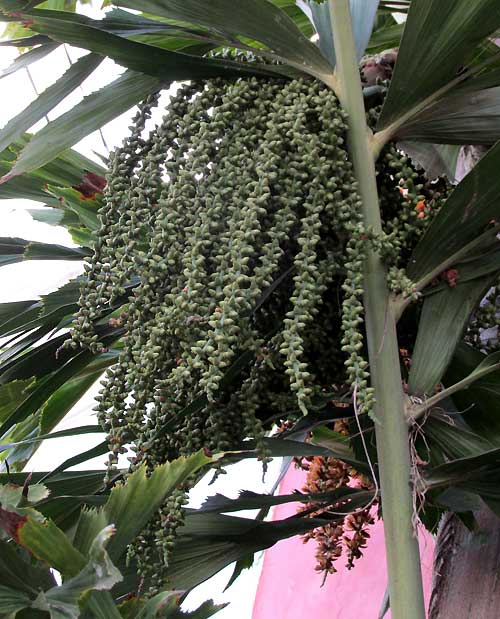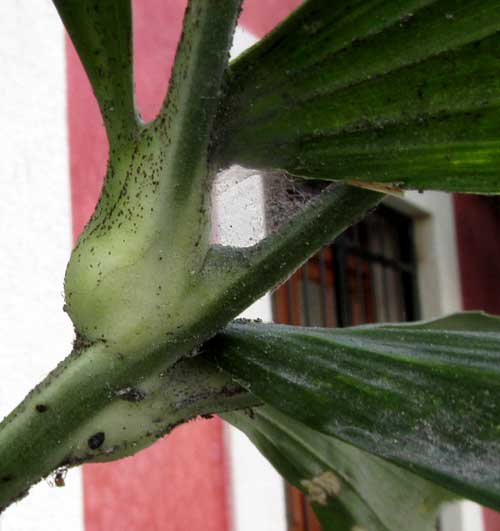Excerpts from Jim Conrad's
Naturalist Newsletter
from the February 28, 2016 Newsletter issued from Hacienda Chichen Resort beside Chichén Itzá Ruins; limestone bedrock; elevation ~39m (~128ft), N20.675°, W88.569°; central Yucatán state, MÉXICO
FISHTAIL PALM
Just down the street where my friends Eric and Mary live in Mérida, two curiously shaggy-looking trees were planted in a tiny front yard, shown below:

Up close it was clear that these were palms, because they bore large "mops" of flowers typical of the Palm Family, the Arecaceae, seen below:

However, these palms' fronds weren't typical palm fronds at all, for they were twice compound -- leaflets divided into leaflets -- and each leaflet expanded at its tip, fan-like, as shown below in a picture taken from below a tree, of just one side:

It was easy to decide what was a leaf and what was a leaflet because where the big compound leaves connected with the stem, at the petiole's base, the base swelled conspicuously, shown below:

Such an unusual and distinctive palm was easy to identify, even though nothing like it is native to the Americas. It was one of the fishtail palms, genus Caryota, native from India to Australia, and this species was CARYOTA MITIS, often known as Clustering Fishtail Palm. The Clustering Fishtail Palm is the most frequently planted fishtail palm in the tropics worldwide.
Another feature unusual to encounter among the palms is that all species of the genus Caryota are "monocarpic," meaning that they flower and fruit only once, and then die. This is less tragic than it seems because the Clustering Fishtail Palm clusters, so when one stem dies there are smaller ones surrounding it. In our first picture you can see such shoots at the base of the nearest palm.
In the wild, birds, squirrels and other animals gladly eat the small fruits, whose calorie content nearly equals that of apples. People don't eat them, however, since they contain such high concentrations of oxalate crystals that even handling them can cause severe itching.